Don’t let the PARIS, TEXAS tattoo on my arm fool you. BORAT: CULTURAL LEARNINGS OF AMERICA FOR MAKE BENEFIT GLORIOUS NATION OF KAZAKHSTAN is my favorite film. It always will be my favorite film. And Sacha Baron Cohen will always be the most important comedian of his generation.
Watch this and then continue reading
I distinctly remember my eager anticipation of BORAT’s 2006 release. I had first stumbled upon the trailer through the now-antiquated website, StupidVideos.com—a comedy relic of the pre-YouTube era. I was a baffled fifth grader living in Bucharest, Romania, completely unable to articulate why I was so magnetically attracted to this film. I had to see it! There was no way I was going to miss it. But I did! I missed the damn movie. Not out of laziness, mind you. Instead, something unprecedented happened: it was the first time (at least in my memory), that a film was rated NC-17 in Romanian theatres! You see, Romanians weren’t too keen on the film. In fact, there was a lot of anti-BORAT sentiment in the air. But more on that in a moment.
So began a waiting game, one that resulted in me finally seeing the film almost a year later, after a business trip gave my father the opportunity to return home with a DVD. As we hit that “play” button, it began to dawn on me just what intrigued me about the film’s trailer in the first place. You see, all of the scenes set in Kazakhstan were actually shot in a Romanian village, just an hour drive away from my middle school. There wasn’t much effort put into hiding this, either. Borat’s wife, Oxana, spoke in Romanian during her introduction (just days before being killed by a bear). Borat was, to me, what South Park was to the people of Colorado. It rubbed a lot of Romanians the wrong way, but I identified with its brazen readiness to take the piss out of its subjects in order to make a mockery out of the western world.
And look, I know what you’re thinking: didn’t you take offense to seeing your homeland misrepresented this way?
My answer is a firm “no,” but the reason for this is significantly more complicated than you’d think. You see, I hadn’t ever seen a Hollywood production genuinely make use of Romania. Sure, we had COLD MOUNTAIN fake the Romanian countryside for North Carolina, and Steven Seagal had certainly made a bargain-bin homestead out of my backyard, but nobody ever really let us (the Romanian people) in on the action. Our country always played as something or somewhere else; a vague, obtuse brutalist metropolis or an old-world countryside.
And while Cohen’s exploitation of this village was yet another case of a Hollywood star faking Romania for an entirely different country, the winking acknowledgment that this is obviously not Kazakhstan let us in on the joke in a way that many of the film’s detractors never really seemed to appreciate. Here you had an old lady cursing in Romanian at an A-list celebrity. It was a reclamation of national identity after years of movies that treated Romania as a nondescript canvas! This crude invitation to be part of the gag is something BORAT did with expert precision. You see, the people Cohen misrepresents are always in on the prank with him. It’s like we’re in the surveillance van with his crew. Unlike the film’s ignorant interview subjects, we know Kazakhs don’t think like this, and Romanians don’t act like this (well, kind of). Sure, it’ll upset those easily offended by the concept of misrepresentation, but that’s missing the forest for the trees.
—
But to understand why BORAT was made the way it was, we need to jump back to 2001. You see, America had a bone to pick with Afghanistan after 9/11. The rampant rise in Islamophobia, the fall of Sadam Hussein, and the literal bombardment of the middle east formed this holy trinity of American imperialism that shaped so much of the Bush years and onwards. The America we have today is a direct consequence of every political maneuver taken in the wake of two planes desecrating the proverbial phallus of America. And with the fallout of the people of Pakistan being treated with equal xenophobic hate speech as those from Afghanistan (I mean, we had a white stand-up comedian become rich off a “dead terrorist” ventriloquist puppet bit, it’s embarrassing), it only seemed natural for Cohen to put America under a microscope and expose the culture’s racist fears of countries ending in “stan.”
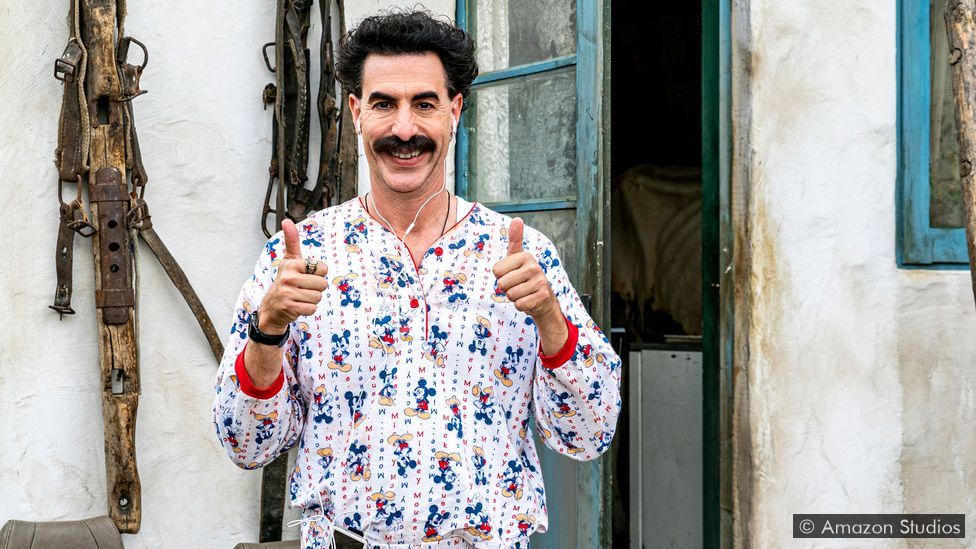
The reason I say all of this is because the Kazakh people were not amused by Cohen’s depiction of their native country. And I can’t say I’m surprised: The absurd lies of their anti-Semitic, misogynistic culture were a thorn in their side. Also, nobody wants to be mistaken for Romania! But my counter-argument over all these years has always been that everything Cohen did was in service of a much bigger thought experiment. BORAT, although referred to as a mockumentary, was never that in my eyes. Yes, its brief 10-minute introduction in Kazakhstan was pure mockumentary bliss (just as absurd and nonsensical as Taika Waititi’s WHAT WE DO IN THE SHADOWS), but as soon as the story leaves its fictitious country and hits the American coast, it shed that label. BORAT was a documentary. It had more in common with Michael Moore’s FAHRENHEIT 9/11 than Albert Brooks’ REAL LIFE. Were moments of it staged? Sure. But it was all in pursuit of something true.
BORAT was a monolithic undertaking. It was Cohen’s Sistine chapel. A head-to-toe study of American culture by way of Socratic method; it was giving its subjects just enough rope to hang themselves, and constantly baiting them with Borat’s nice-guy normalization of cultural taboos. It was a film so jam-packed with golden moments that the DVD’s deleted scenes were as good as anything you’d find in another movie. Yes, it shined a light on a wealth of American intolerance, but it also served as a reminder that its people can be loving, humorous, and kind; from a weather man who can’t stop laughing to a kindly driving instructor who tries to teach Borat about chivalry. If Borat-the-person’s greatest ability was to get latent bigots to rear their ugly heads, then BORAT-the-movie’s greatest asset was to remind us all that there is enough light to combat this pit of darkness.
—
BORAT SUBSEQUENT MOVIEFILM is Cohen’s feature-length return to the muted grey-suit (or is it blue?!). To say that America is more divided in 2020 than it was in 2005 is a wallop of an understatement. In fact, so much has changed that an era as problematic as the Bush years now sports some perverse halcyon glow in the eyes of the average American. Much of the closeted ideologies that Cohen had to carve out of his subjects now lie dormant on the surface. It only takes about two minutes of conversation to find out if somebody is into QAnon. With the added hurdle that Borat is an established property today, Cohen had to think of something new; he couldn’t just make another film exposing latent prejudices—it’s 2020, Trump is president, they’re out in the open anyway. Cohen’s solution came in two installments: First, Borat needed a new face. Secondly, his satire would have to be rooted in proving why Americans should be ashamed of their prejudices.
The new face comes in a number of hysterical, baffling, and all-around wild disguises. From Phillip Drummond III, to Cliff Safari, to John Chevrolet, Cohen borrowed from his WHO IS AMERICA? playbook, constantly switching up his persona to fool an unsuspecting crowd: a dude playing a dude disguised as another dude. All of this truly hits its stride when Borat, dressed as Country Steve, pulls a “Throw The Jew Down The Well” at a right-wing rally in Olympia, Washington, getting a crowd of AR-15 wielding onlookers to join in on a song titled “The Wuhan Flu.” It’s a scary moment, not so much because its audience is armed and totally comfortable with singing this racist song (once again, this film isn’t about proving that Americans are above indulging in hate speech), but rather how quickly they all join in.
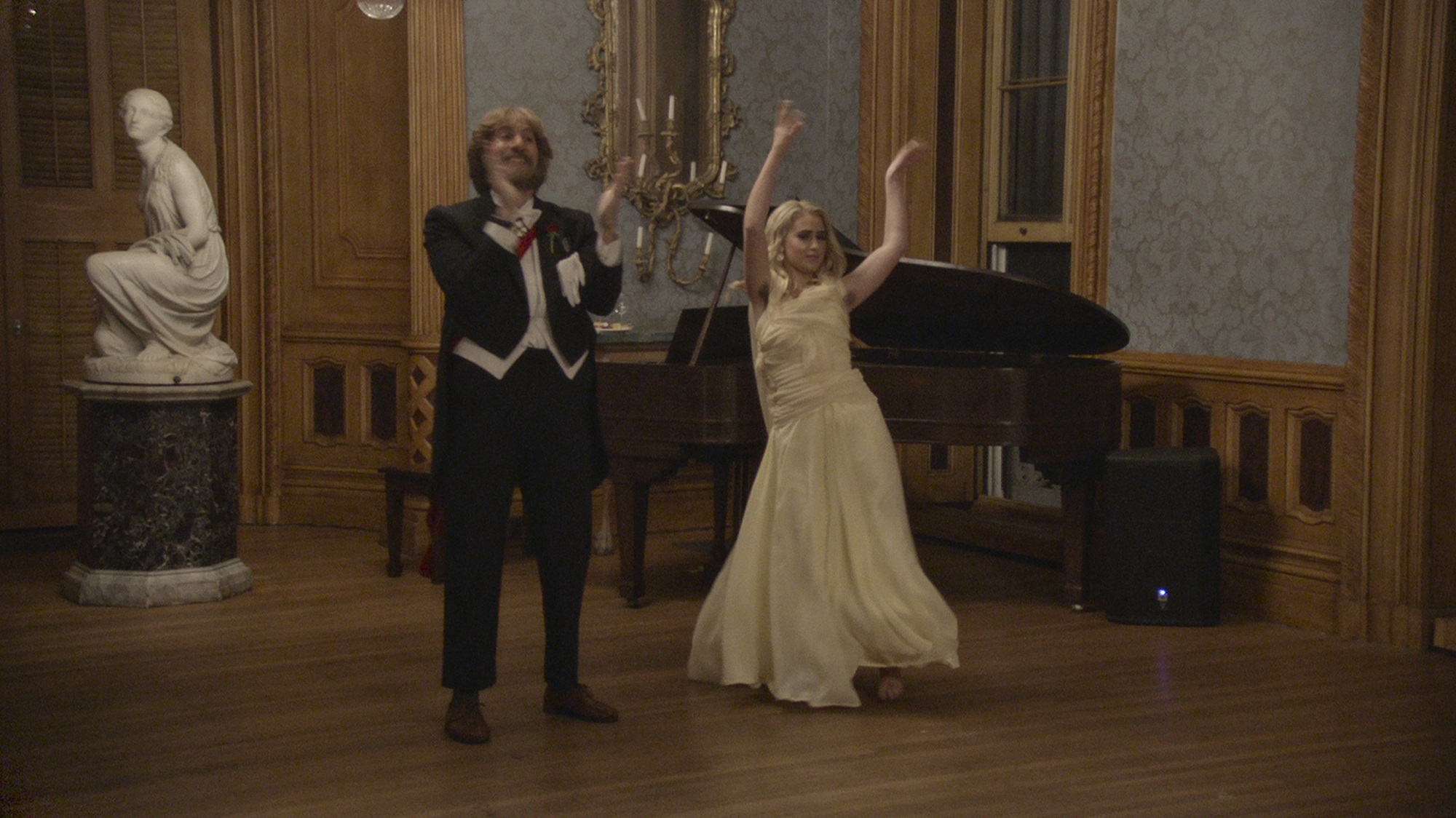
But perhaps the most important new face is the literal additional personage of Maria Bakalova’s Tutar Sagdiev, Borat’s uninvited daughter who, after eating famed Kazakh porn star and minister of culture, Johnny The Monkey, finds herself on a quest to marry Mike Pence (I’m not going to bother explaining what that means). Bakalova opens the floodgates on some truly insane material, most notably a closing beat featuring Rudy Giuliani that has to be seen to be believed. Once again implementing knowledge Cohen had gained from his time making WHO IS AMERICA?, Bakalova is given a full journalistic persona and right-wing press accreditation in order to find herself in the same room with New York’s former mayor.
It’s moments like these that cement Cohen’s sequel as an overall success when, let’s face it, this very well could have sucked (Cohen isn’t above making lackluster material). Because here’s the deal: there’s no way around the fact that BORAT SUBSEQUENT MOVIEFILM is a rush-job. It’s an extremely accomplished rush-job, but you can feel it in every fiber of its production. It’s funny, but lacks the meatiness of the original’s material. Countless jokes here feel like the stuff left on the cutting room floor of the original BORAT; a great example is an extended scene of Borat cutting a man’s hair and showing him each snipped lock, not all too dissimilar from the original’s deleted scene of Borat asking a grocery store employee what every single product in the cheese aisle is. The barber shop sequence lacks a sociopolitical edge (at least the grocery store scene is a mockery of capitalism’s wasteful diversity of produce), but it’s still funny. The main problem is that the original would have never included a moment this trivial because it would have been outweighed by stronger, more insightful documentary work.
—
It’s a mixed pot. The big moments are huge, and the small moments are a little too quiet. But that’s to be expected when the first installment includes hundreds of hours of road-trip footage and the second had to adapt to the changing conditions of COVID-19 and a more railroaded screenplay. BORAT gave us everything from a Kazakh journalist singing the national anthem at a rodeo to an entirely nude hotel chase scene. It was total mayhem. But BORAT SUBSEQUENT MOVIEFILM gave us the smiles and teary-eyed nostalgia that just might build a rinky-dink bridge across America’s cultural divide; BORAT was never a partisan comedy. Its fan base exists on both sides of the political spectrum today—progressives who want clever satire and conservatives who are tired of the over-censor of comedy for the sake of political correctness.
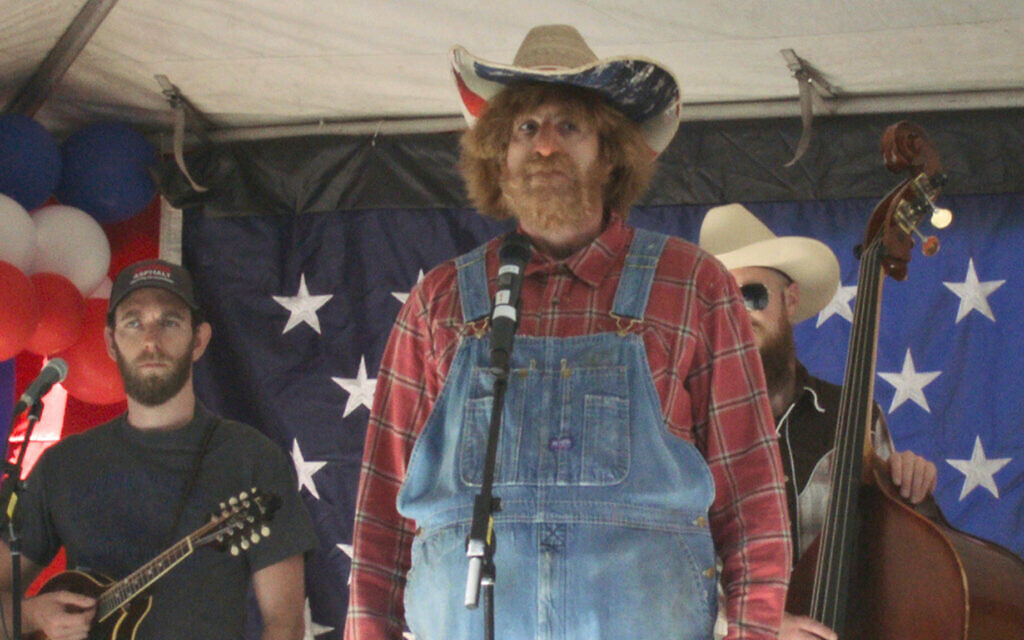
Has Borat Sagdiev actually become more like the American people over time, or have the American people become more like Borat? Can a fundamentally good person’s naivete and ignorance be a product of a wholly dysfunctional environment? A lot of that has to do with how Cohen positions his eponymous lead within American culture. When Borat sings his national anthem’s opening lyrics, “Kazakhstan, greatest country in the world, all other countries are run by little girls,” it doesn’t sound too different from the MAGA sentiments we see so much of today. Because when you boil it all down, you begin to realize that as indoctrinated and moronic Borat may be, he actually boasts a lot of good-guy energy. It’s why Borat has always been a more popular character than Brüno or Ali G. Yes, he’s a big dumb idiot, but he’s a kindly, well-intentioned dumbass. He’s only the way he is because his country entertains reductive thinking. Yes, Cohen is here to expose Nazis, homophobes, bigots, and racists, but the bulk of BORAT’s analyses lie in talking with people still susceptible to change. It’s why I maintain the belief that BORAT is the best-aged film of all time.
This is also, perhaps, why I so appreciate BORAT SUBSEQUENT MOVIEFILM’s addition to Kazakh lore. I’ve always believed that BORAT has the most underappreciated extended universe of any fictional intellectual property, especially once you begin to unpack Borat’s guest appearances in THE ALI G SHOW. From the celebration of the Tishnik Massacre to the discography of Korky Buchek, there’s a lot to learn about Cohen’s fictional Kazakhstan. And with BORAT SUBSEQUENT MOVIEFILM we run the gamut on new information: from the way men are executed by cows to the true origins of the Coronavirus. It’s a wild film, and something of a magic show for anyone who is up to date on their Kazakh history. It brought a smile to my face and a tear to my eye. Is it as good as the first film? No. But it’s what we needed, and in some ways more than we ever deserved.
When all is said and done, Cohen came back into our lives at just the right moment. As a lifelong fan it was a dream come true when I had to sign an NDA a few months ago and got to act as an extra who chases a Borat body-double through the streets of Bucharest (yes, they filmed in Romania again, and this time they even faked some of America for it). Sure, I didn’t make the final cut, but I got to do my part in this silly little film. For someone who felt like his country was (albeit crudely) invited into the zeitgeist-defining moment that was the original BORAT, there was something bittersweet about playing an extra in the sequel. To then see Cohen double down on his winking nod to my people by having every single Kazakh side character (most notably Dani Popescu’s Premier Nazarbayev) speak entirely in Romanian, and then grant Romania the honor of kicking off the closing credits with a cover of Grover Washington, Jr.’s “Just the Two of Us” by none other than Gypsy-Moldovan folk icons, Fanfare Ciocarlia… be still my beating heart.



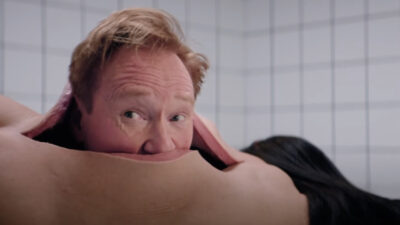

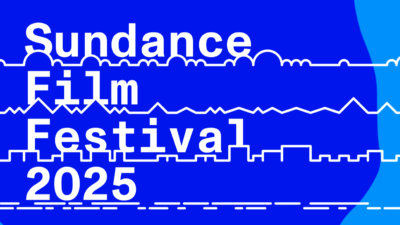
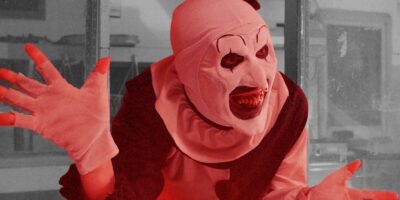





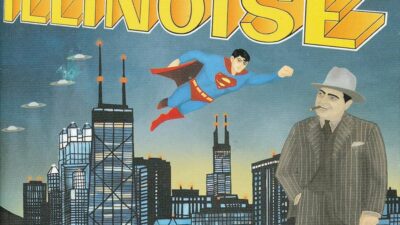



Comments